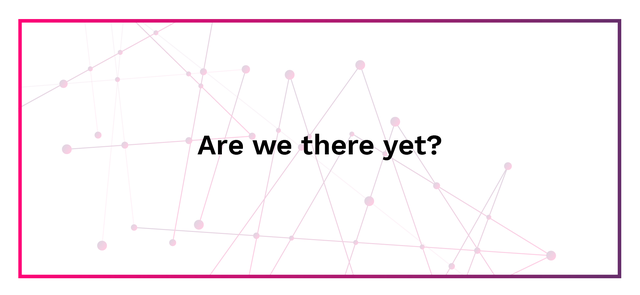Top Business Drivers for Analytics Programs: Part Two

Anyone who’s been on a road trip has heard this question. It usually comes from the backseat of the car, where it can be difficult to see the route ahead, and near-impossible to judge progress.
For those tasked with managing their organization’s data and analytics program, the question is equally familiar. When will we see value from our investment? When will we be able to access the insights we need? Are we there yet?
Starting off in the right direction
At their essence, analytics exist to support business goals. While this statement may seem obvious, far too many well-intentioned analytics programs fail to achieve their potential. Teams spend money, organize data, and build reports and dashboards … but, somewhere in the process, they lose sight of their destination.
As a result, no matter how good the analytics vehicle, it’s still heading down a different road than where the business needs to go.
This can happen for a range of reasons. A pilot project may turn into a full-scale initiative without adequate oversight. Organic growth may quickly outpace governance. Ad hoc projects in various business groups may duplicate efforts or result in critical gaps—or worse—multiple versions of the truth. Whatever the challenge, the first step toward a mature and successful analytics program is taking time to align the initiative with core business objectives.
Plotting a strategic route
Creating this overarching strategy grounds the program in real-world priorities and garners critical cross-functional support. Most importantly, through open communication it helps all involved to understand how the business will use the data, and the corresponding insights and information it can produce. After all, it’s reaching the destination that matters. The organization will judge the analytics program on how well it contributes to business outcomes.
Reaching milestones
The following are the most common business drivers for analytics programs:
- Growing revenues
- Increasing operational efficiency
- Strengthening customer experiences
- Driving innovation
- Improving compliance
Honing in on at least one of these business goals establishes a strong foundation for your program. It creates focus, transparency and engagement with business and IT stakeholders. It helps prioritize high-level requirements. Most importantly, it gives the organization a way to measure program success.
Let’s look at these examples to show how each business driver might shape your analytics program differently.
Growing revenues
A retailer wants to grow revenues among its existing customers. In this case, the organization would realize great value from an analytics system that could predict a customer’s propensity to buy, then deliver data about customer segments to a marketing automation platform for hyper-targeted promotions, incentives and marketing efforts, all designed to increase conversion.
Increasing operational efficiency
Manufacturers keep a keen eye on operational expenses, including costly unscheduled maintenance. These organizations could benefit from analytics that use data collected from sensors on trucks or production equipment. Capturing this data and combining it with other data can predict the need for maintenance well in advance of more costly breakdowns or other issues.
Strengthening customer experiences
For industries such as online gaming where the business goal is keeping users engaged in a game for as long as possible, the right analytics system might support real-time, in-game adjustments that match the level of play to each individual’s skill level and style. This sensitivity would help maximize in-app purchases or ad views.
Driving innovation
If an organization wants to empower innovation at multiple levels across the business, self-service analytics may be a priority. This approach makes data easily accessible to many within the organization. It requires a data platform that facilitates access to different types of data and serves a variety of user types.
Improving compliance
A company subject to privacy regulations could architect its analytics program to track the source, use and enhancement of all personally identifiable information in its systems. Their analytics would focus on indefinite storage as well as logging all changes to data and providing conclusive evidence of data origin and use.
Plotting one or more of these goals sets the right destination for your entire analytics journey.
With an identified objective, both the development team and business stakeholders have a way to frame their expectations, implement the right technologies, measure forward progress and focus their efforts on achieving tangible outcomes as quickly as possible.
All of which means you’ll be well-equipped to provide a meaningful answer the next time someone asks, “Are we there yet?”
Our next post in this series will look at the four stages of analytics maturity.
For more information, please download our white paper: Accelerating Your Analytics Journey.
Be sure to read the other posts in this series:
- Part One: Accelerating Your Analytics Journey
- Part Three: The Four Stages of Analytics Maturity
- Part Four: The Importance of a Modern Cloud Platform Foundation
If you have any thoughts or questions about this post, or series, please leave them in the comments.



